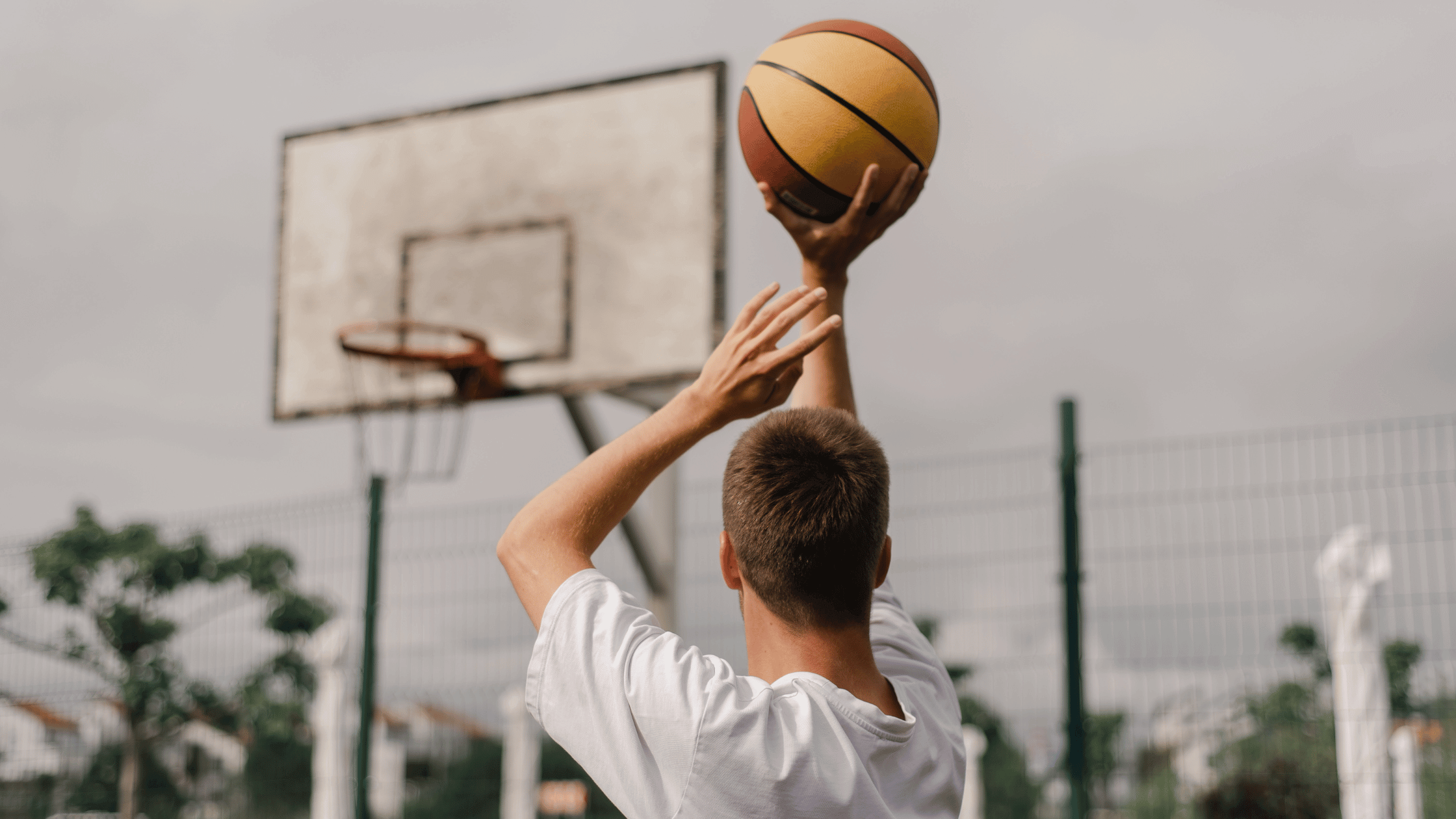Most Common Injuries in Men's Basketball: Prevention and the Role of Physical Therapy

Licensed Physical Therapist, PT, DPT // EW Motion Therapy Homewood
Basketball is a game that offers much more than just the excitement of scoring points; it also demands quick reflexes, intense focus, and strong teamwork. However, its fast-paced nature means injuries are almost inevitable. In men's basketball, certain injuries are more common than others. This article will delve into the specifics of these common injuries, ways to prevent them, and how physical therapy can aid in your recovery journey.
Top injuries in male basketball players
Ankle sprains
What it is: An ankle sprain is the stretching or tearing of the ligaments that connect the bones in your ankle. This often occurs when a player lands unevenly after a jump or twists an ankle during rapid movements.
Prevention: Warming up before you hit the court is a simple yet effective way to prepare your ankle for the physical demands of basketball. Additionally, choosing high-top basketball shoes can provide better ankle support. Balance exercises that strengthen the ankle can also be a key preventive measure.
Physical therapy benefits: Physical therapists can guide you through exercises designed to improve your ankle's strength and flexibility. Techniques like taping can offer additional support and protection to the injured area. Gait training can further improve your walk or run, making you less susceptible to future sprains.
Knee injuries (ACL/meniscus)
What it is: Knee injuries often focus on the Anterior Cruciate Ligament (ACL) or the meniscus. Partial or full tears in these areas can result from abrupt stops or sudden changes in direction.
Prevention: Strengthening exercises targeted at the quadriceps and hamstrings can improve knee stability. Wearing a knee brace during play can also offer additional protection. It's crucial to focus on proper technique when jumping and landing to minimize the risk of knee injuries.
Physical therapy benefits: A physical therapy program can help you prevent ACL and meniscus injuries and help you recover if you don’t have surgery. If you've undergone surgery for an ACL or meniscus tear, therapists also guide patients through strengthening exercises that target the knee and surrounding muscles. Pain management can involve ice or heat therapy to reduce discomfort and inflammation. Your therapist can also implement methods to return you to sports training as soon as possible.
Hand and wrist injuries
What it is: Injuries like jammed fingers or wrist sprains usually happen during activities like catching the ball incorrectly or taking a fall.
Prevention: Exercises to strengthen the wrist can help prevent these injuries. Learning and applying proper ball-handling techniques can also make a big difference. Some players opt to use wrist guards for extra support and protection.
Physical therapy benefits: Physical therapists can help improve your finger and wrist mobility through a series of exercises. The use of therapy putty can help in improving your grip. Supportive techniques like splinting and taping can also be used to aid in recovery.
Hamstring strains
What it is: A hamstring strain is a pull or partial tear in the three muscles that run along the back of your thigh. This injury is common during sprinting or jumping activities. If not properly managed, hamstring strains can return or worsen over time.
Prevention: A thorough warm-up and stretching routine can prepare your hamstrings for the strenuous activity ahead. Exercises like leg curls can strengthen your hamstrings, making them less susceptible to strains. Staying hydrated is also crucial in preventing muscle fatigue and subsequent injury.
Physical therapy benefits: Physical therapists can guide you through targeted stretching and strengthening exercises. Soft tissue massages can help ease muscle tension, and neuromuscular re-education can improve your overall movement patterns.
Back injuries
What it is: Lower back pain is a common complaint among basketball players, which can stem from actions like lifting, running, or falling during the game.
Prevention: Core-strengthening exercises can significantly improve your resistance to back injuries. Proper lifting techniques should be employed to avoid putting undue stress on the back. Adequate rest and recovery periods are also essential in preventing back-related issues.
Physical therapy benefits: Physical therapists can use spinal alignment techniques to correct imbalances. Core stabilization exercises are integral to therapy, as a strong core can support a healthy back. Therapists can also provide ergonomic education to help improve your posture on and off the court.
Basketball is a sport that comes with its fair share of risks, but understanding what these common injuries are can help you take steps to prevent them. If you find yourself sidelined, remember that physical therapy offers a specialized approach to help you recover and get back to the court safer and stronger than ever before. Our EW Motion Therapy specialists love helping athletes work toward their goals with sport-specific programming and individualized treatment plans. If you’re curious about what else physical therapy can do for you, click the button below to download our answers to 20 frequently asked questions.


